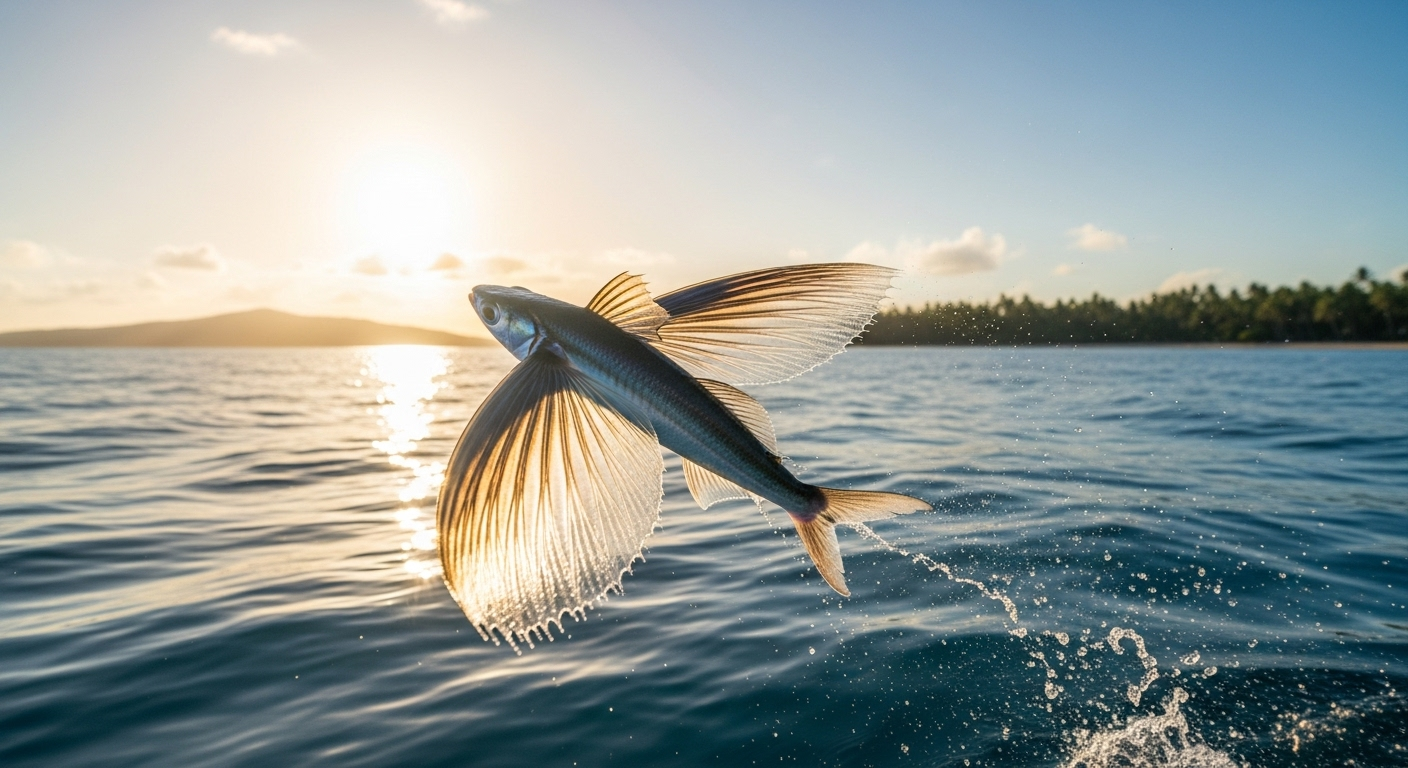Aquatic Acrobatics: The Remarkable Behaviors of Flying Fish
In the vast expanse of our planet's oceans, a fascinating group of marine creatures has perfected an extraordinary skill: the ability to soar above the waves. Flying fish, belonging to the family Exocoetidae, have captivated scientists, sailors, and nature enthusiasts for centuries with their remarkable aerial displays. This article delves into the world of these aquatic acrobats, exploring their unique adaptations, behaviors, and the challenges they face in today's changing marine ecosystems.

The Evolution of Flight in Fish
The ability to glide through the air is not unique to flying fish, but they have certainly perfected the technique. Fossil records suggest that the ancestors of modern flying fish first appeared during the Oligocene epoch, approximately 66 million years ago. Over time, these fish developed elongated pectoral fins that act as wings, allowing them to generate lift and remain airborne for extended periods.
Evolutionary biologists believe that the development of this gliding ability was primarily driven by the need to escape predators. By launching themselves out of the water, flying fish could effectively evade faster swimming predators like tuna and swordfish. This adaptation proved so successful that it has persisted and evolved into the diverse group of flying fish species we see today.
Anatomy of a Flying Fish
Flying fish possess several unique anatomical features that enable their aerial feats. The most prominent of these are their greatly enlarged pectoral fins, which can span up to 70% of the fish’s body length. These fins are supported by strong, elongated fin rays that give them the rigidity needed to function as wings.
In addition to their wing-like pectoral fins, flying fish have a streamlined body shape that reduces drag both in water and air. Their tail fin is asymmetrical, with a larger lower lobe that provides the powerful thrust needed for takeoff. Some species also have enlarged pelvic fins that act as stabilizers during flight, much like the tail of an airplane.
The Physics of Fish Flight
The process of a flying fish taking to the air is a marvel of natural engineering. To initiate flight, the fish rapidly beats its tail fin while still submerged, accelerating to speeds of up to 60 kilometers per hour. As it nears the surface, it tilts its pectoral fins at an angle to generate lift, much like an airplane’s wings.
Once airborne, the fish can glide for considerable distances by adjusting the angle of its fins to maximize lift and minimize drag. Some species can even perform consecutive glides by dipping their tails back into the water to generate additional thrust, a technique known as taxiing. This allows them to extend their time out of the water and cover even greater distances.
Species Diversity and Distribution
The Exocoetidae family comprises approximately 70 species of flying fish, distributed across tropical and subtropical waters worldwide. These species exhibit a range of sizes, with some reaching lengths of up to 45 centimeters. The diversity of flying fish species is particularly notable in the Indo-Pacific region, where warm waters and abundant food sources support a wide variety of marine life.
Some of the most well-known species include the Tropical Two-Wing Flyingfish (Exocoetus volitans), which is widespread in tropical waters, and the California Flyingfish (Cheilopogon pinnatibarbatus californicus), found along the Pacific coast of North America. Each species has unique characteristics adapted to its specific habitat and environmental conditions.
Ecological Importance and Conservation
Flying fish play a crucial role in marine ecosystems as a vital link in the oceanic food chain. They are an important food source for larger predatory fish, seabirds, and even some marine mammals. Their abundance and wide distribution make them a key species in transferring energy from lower trophic levels to top predators.
However, like many marine species, flying fish face increasing threats from overfishing, pollution, and climate change. In some regions, flying fish are commercially harvested for food and bait, leading to concerns about the sustainability of these practices. Additionally, rising ocean temperatures and changing current patterns due to climate change may impact the distribution and abundance of flying fish populations.
The Future of Flying Fish Research
As our understanding of marine ecosystems continues to grow, so does our appreciation for the unique adaptations and behaviors of flying fish. Recent advancements in technology, such as high-speed cameras and satellite tracking devices, have allowed researchers to gain new insights into the flight mechanics and migratory patterns of these fascinating creatures.
Future research efforts are likely to focus on the potential impacts of climate change on flying fish populations and their role in maintaining the health of marine ecosystems. Understanding these dynamics will be crucial for developing effective conservation strategies and ensuring the long-term survival of these remarkable aquatic acrobats.
In conclusion, flying fish represent one of nature’s most spectacular examples of adaptation and evolution. Their ability to bridge the gap between aquatic and aerial environments continues to inspire scientific inquiry and captivate the imagination of people worldwide. As we face the challenges of a changing planet, the study and conservation of flying fish and their habitats remain vital to our understanding of the complex and interconnected nature of marine ecosystems.





